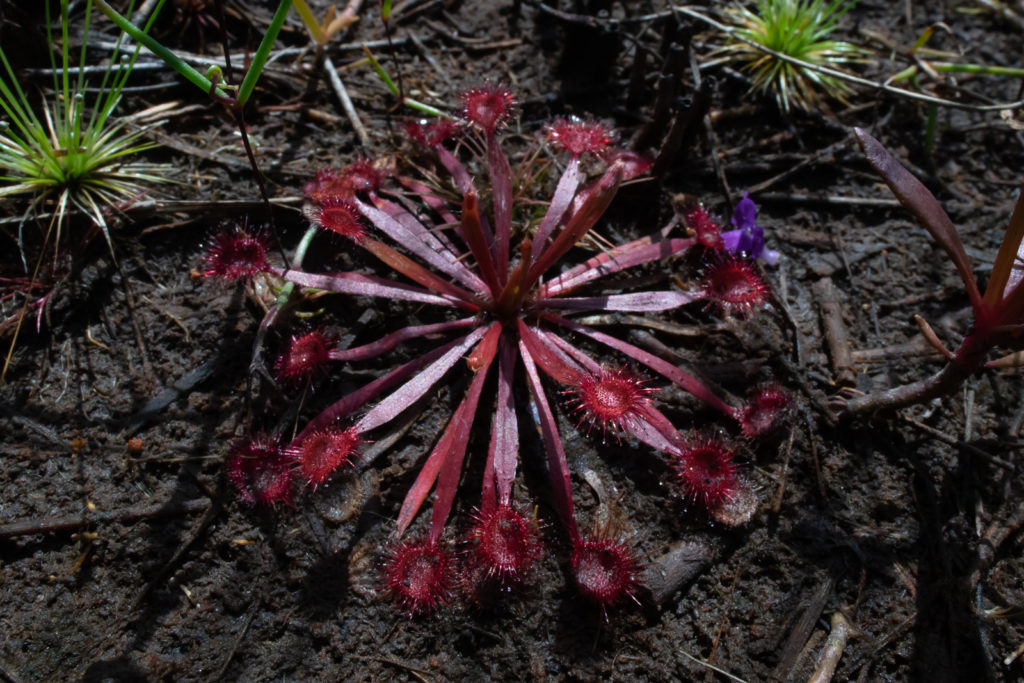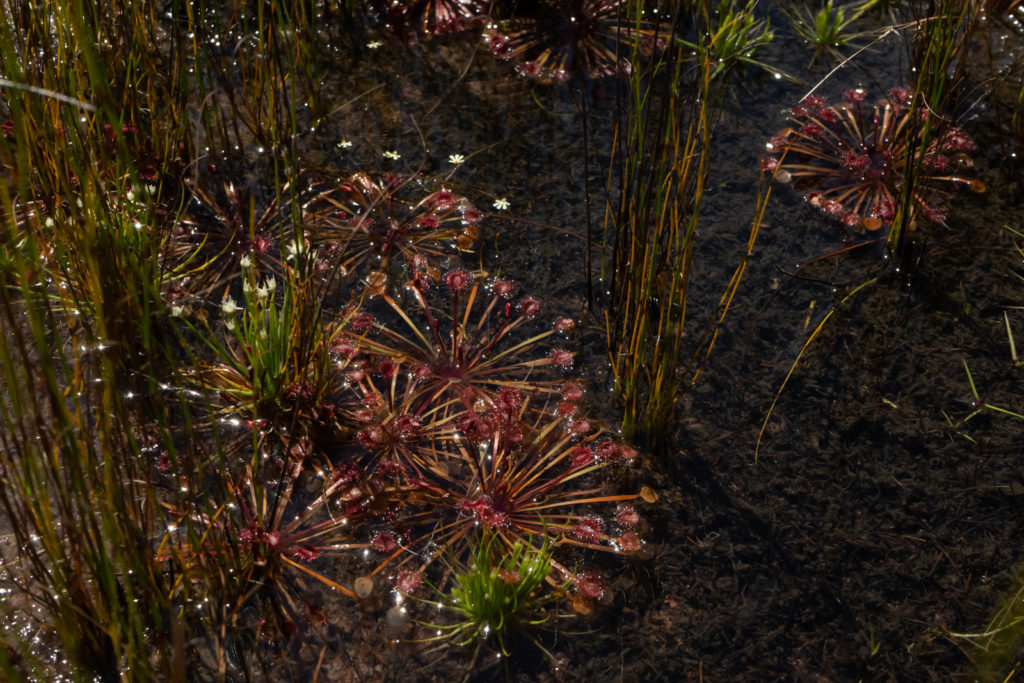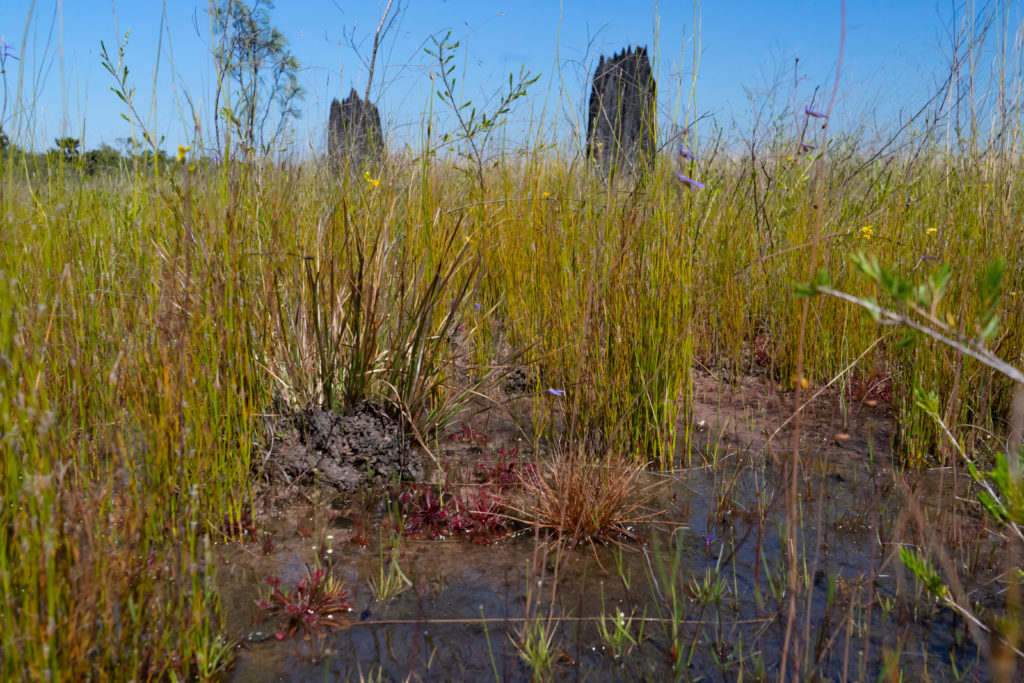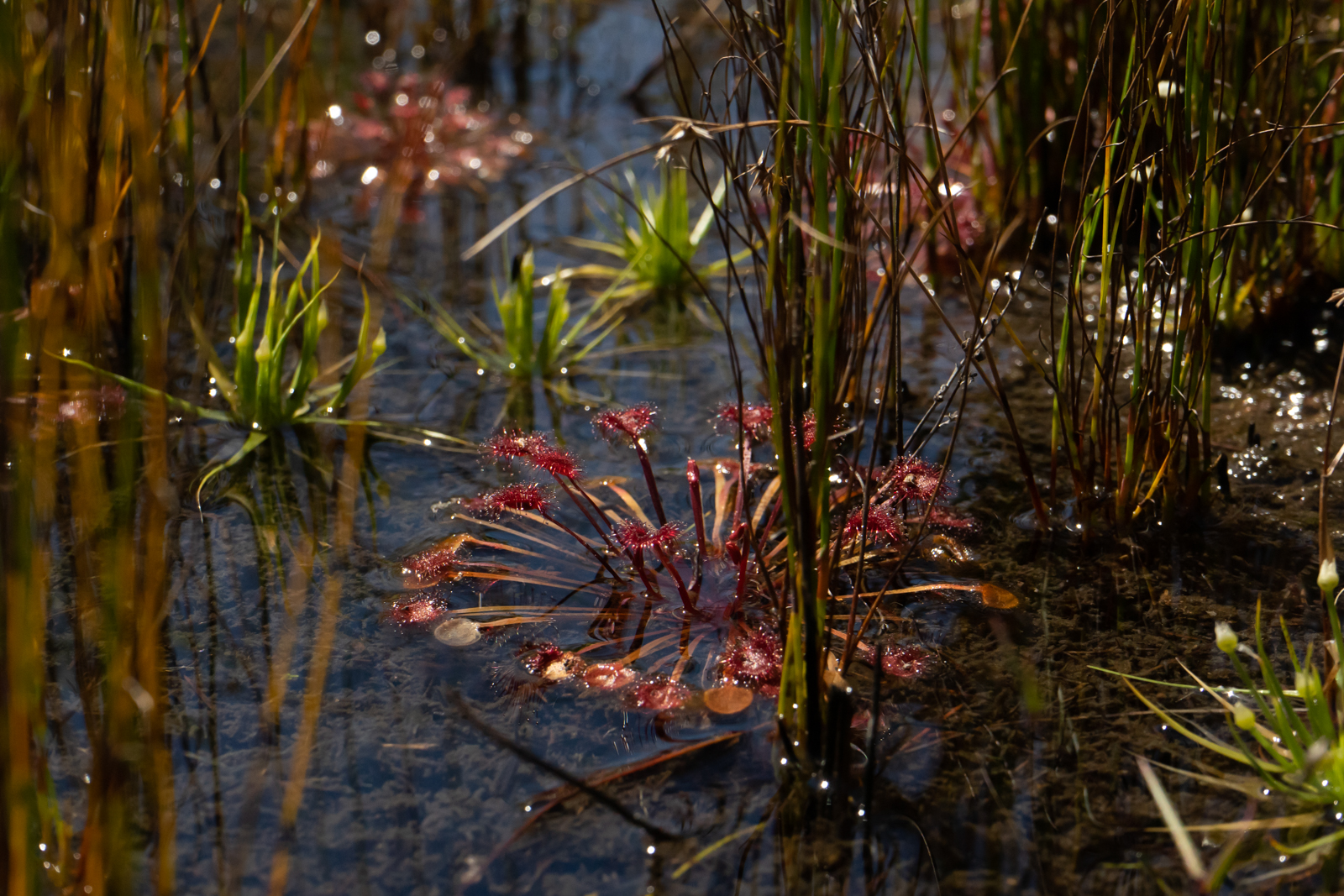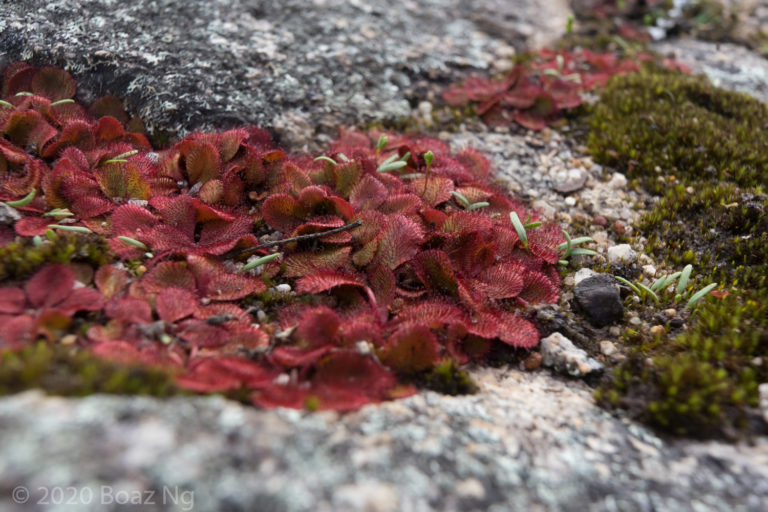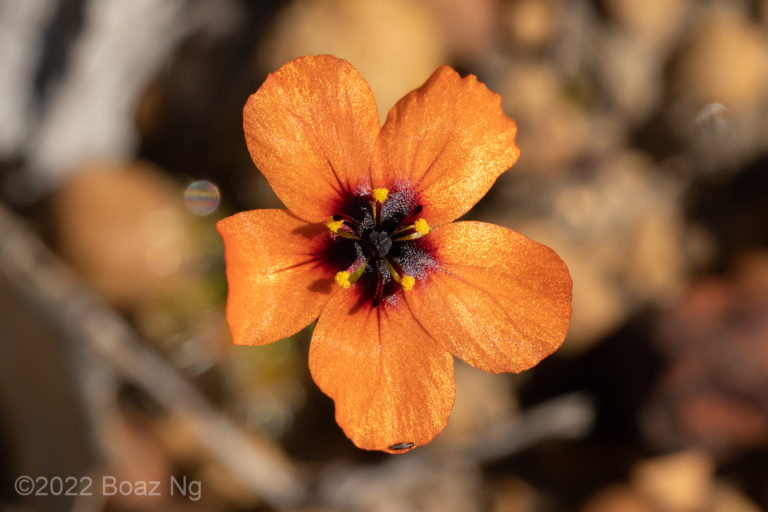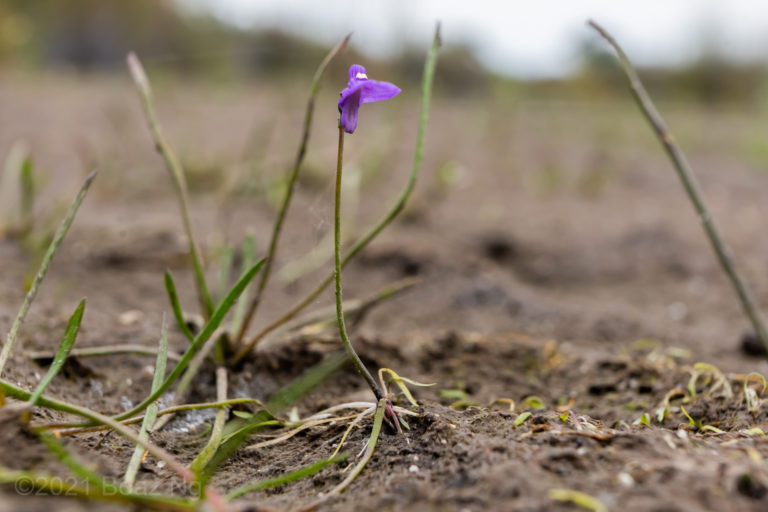Drosera dilatatopetiolaris is a sundew in the section Lasiocephala. The species is named for its (very slightly) dilated petioles.
D. dilatatopetiolaris has long, leaves that form a raised rosette. During the growing season, these leaves are mostly hairless, becoming hairier as the plant progresses into dormancy. The petioles vary in width from thin to very thin. The laminae are more or less circular and rather small. The flowers are formed in October at the beginning of the wet season. The inflorescence is hairy and features pedicels that are upright in fruit.
The species is common throughout the Top End of the Northern Territory and is found in seasonally damp sandy substrates in flood plains, grassy flats, open forests and the banks of small creeks.
Like many species in the subgenus, D. dilatatopetiolaris can be wildly variable in appearance in response to small environmental factors, maturity and its stage throughout the growing season. Specimens with thin petioles can be very similar in appearance to the sympatric D. petiolaris species complex as well as D. fulva. In practice, it can be almost impossible to confidently identify these plants without a flower stalk. Drosera dilatatopetiolaris is reliably distinguished from the D. petiolaris group and D. fulva by its upright pedicels when in fruit (those of D. aff. petiolaris and D. fulva are pendulous).
Accordingly, since my visit was not at the right time to observe flowering, all photographs in this post only represent best-guess identifications based on the slightly dilated petioles.
